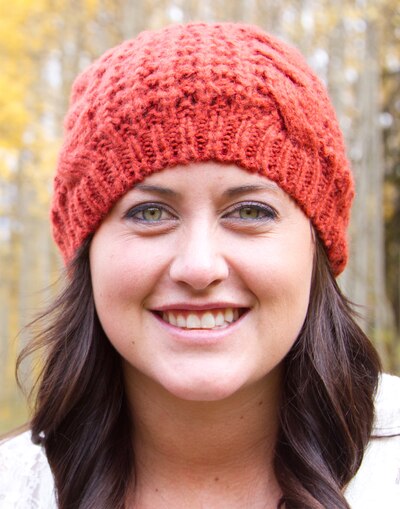In our “How I Help” series, we feature school counselors, social workers, and psychologists who have been recognized for their work. You can see other pieces in the series here.
Students at Eagle Valley Middle School in western Colorado were spending lots of time on social media, and too often their comments turned mean. Counselor Kayleen Schweitzer decided things needed to change, so last year she spearheaded a schoolwide campaign urging students, staff and parents to take a five-day break from social media. More than 150 people signed the pledge.
The results were encouraging. Participating students reported that they had more free time and were getting to bed earlier. Some even said the break made them realize they had been addicted to social media.
Schweitzer, who was named 2018 Middle School Counselor of the Year by the Colorado School Counselor Association, talked about how campaign organizers got students to participate, what she wants parents to know about middle-schoolers, and why she wants students to regard visiting a counselor as normal.
This interview has been condensed and lightly edited.
Why did you become a school counselor?

When I was 15, I lost my father. It was very unexpected and I found out at school. When I returned to school no one checked on me or followed up to see if I was doing OK. I remember wishing I had more support at school. That was the first time I realized that one day I wanted to be someone who could be there for students going through a hard time or transition.
When I was in college my favorite classes had to do with child development. I went on to pursue a degree in family and human services and a graduate degree in school counseling. I’m definitely happy with my decision to be a school counselor and I look forward to going to work every day.
Tell us about an effort or initiative you spearheaded at your school that you’re particularly proud of?
In the 2016-17 school year, my principal Katie Jarnot and I identified a need for something that would help with some of the conflicts occurring at our school. Katie came across a national program called No Place For Hate. It was just what we were looking for. In the 2017-18 school year, we brought No Place For Hate to our school. It has been amazing and powerful.
We noticed a lot of mean behavior on social media and that our students were spending so much time online. Also, with a surge of recent research into the detrimental effects of screen time, social media, and the correlation to depression and anxiety, it was clear there needed to be a change. So Eagle Valley Middle School’s No Place for Hate Coalition created a schoolwide activity that attempted to give students, staff, and parents a glimpse into positives that can come from limiting social media use and taking back control of our lives. We asked our school community to commit to giving up social media for five days.
During those five days, everyone who took the pledge was asked to do a daily reflection on the differences that they noticed. We offered a chance to win prizes as an incentive. To our surprise, we had 110 students (about one-third of our school), 18 staff, and 30 parents sign up.
Though not everyone completed the five days, we felt we brought some awareness to this problem. Students noticed how much more time they had when not using social media and they were able to get to bed earlier. Some actually admitted this activity helped them realize that they are addicted to social media. A few parents reported they were able to be more present with their family at night and have fewer distractions.
Is there a tool, curriculum or program you couldn’t live without in your job?
The tool I couldn’t live without is Google forms. Students can fill out a form to let me know they need to see me. When they fill out the form it notifies me with an email and I can see who is requesting to see me. It also allows me to keep data on what issues my students need support with. This helps me plan what supports I need to put in place through classroom guidance lessons, small groups, and individual counseling.
What’s the biggest misconception you’ve encountered about your role in the school where you work?
The biggest misconception I have encountered is that it’s a bad thing to go to the school counselor and that you need to have a huge problem. I have noticed that some middle school students are embarrassed to be seen going to the school counselor. I have worked really hard to make it normal to come to me and teach them that the strongest, most successful people need help sometimes.
You spend lots of time with students. Knowing what you know, what advice would you give to parents?
I would remind parents that students’ frontal lobes are not fully developed and when they say they don’t know why they did something, they are probably being honest. I would also let them know that even if a student says they want parents to give them space and leave them alone, it’s not really what they want or need.
Tell us about a time when you managed to connect with a challenging student or a student facing a difficult situation. How did you do it?
I have a student who is now in eighth grade and has been coming to see me on a regular basis when she needs support. As a sixth-grader, she was so closed off and worried about being seen coming to talk to me. I have been very consistent with her and kept reminding her that I’m always here if she needs anything. I ended up running a group with her and a lot of her friends. She saw that her friends loved coming to see me and were willing to talk to work through some of their problems. I also spent time with her and showed her it was a safe place to talk. Over time she broke down her walls and was able to trust me. Today, she stops by when she is doing well and when she is struggling. She loves to come and eat lunch with me. She has grown so much and I’m going to miss her dearly when she goes to high school.
What is the hardest part of your job?
The hardest part of my job is going home and worrying about my students. You always wish you could do more or make students see things can get better and they are enough. Middle school is such a hard time for students as they struggle to find where they fit in and deal with personal changes.
Tell us about a memorable time — good or bad — when contact with a student’s family changed your perspective or approach.
In my first years as a school counselor, I had a student who was consistently falling asleep in class and missing a ton of school. When I had a meeting with his family, I found out that his mother was a single mom and his grandma, who also lived in the house, was very sick. The student was staying home to help take care of his grandma and his siblings so his mom could work and make money for the family. His father was an alcoholic who was in and out of rehab.
I realized that different cultures have unique values and priorities. It also taught me that you never know what someone is going through so we need to really take time to talk to kids to figure out what is happening in their personal lives before jumping to conclusions.
You spend your days trying to help students and staff with any number of things. How do you wind down after a stressful day?
The way I wind down after a stressful day is to come home and spend time with my children. They are still young and innocent. I try to really enjoy this precious time with them when they have fewer worries and just want to have fun. I also love spending time with friends and clearing my mind of the worries of my job. Last, I enjoy catching up with email and work-related tasks as every time I scratch out something on my to-do list I seem to get stress relief.

